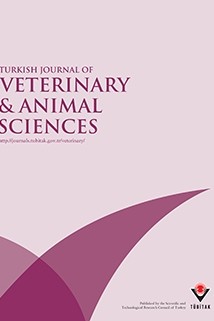
Turkish Journal of Veterinary and Animal Sciences
Yazarlar: Erol BAYTOK, Taylan AKSU
Konular:-
Anahtar Kelimeler:Corn silage,Formic acid,Molasses,Bacterial inoculant,Ruminal fermentation
Özet: The objective of this study was to determine the effects of formic acid, molasses, and microbial inoculant (homofermentative lactic acid bacteria) as silage additives on silage quality and ruminal fermentation characteristics. Silages with or without formic acid (0.5%), molasses (5%), or microbial inoculant (10 g/t) were fed to ruminally cannulated, 1.5 year-old Kıvırcık x Morkaraman sheep. Silage treated with molasses had significantly greater DM and CP concentrations compared with other groups (P < 0.05). pH values did not significantly differ among treatments (P > 0.05). Lactic acid concentrations were significantly higher in silages treated with enzyme or molasses compared with others (P < 0.05). While acetic acid concentration was the highest in silage treated with acid, it was the lowest in silage treated with molasses (P < 0.05). Silage NH3-N concentration was the highest in silage treated with molasses, but the lowest in silage treated with acid (P < 0.05). Post-feeding ruminal total organic acid concentrations were significantly greater in sheep fed silages with additive than the control (P < 0.05). While percentages of acetic acid were greater, percentages of butyric acids were less in the rumen fluid of sheep fed silage without additive compared with the rumen fluid of sheep fed silage treated with silage additives. However, percentages of propionic acid did not differ among treatments.
Dergi editörleri editör girişini kullanarak sisteme giriş yapabilirler. Editör girişi için tıklayınız.